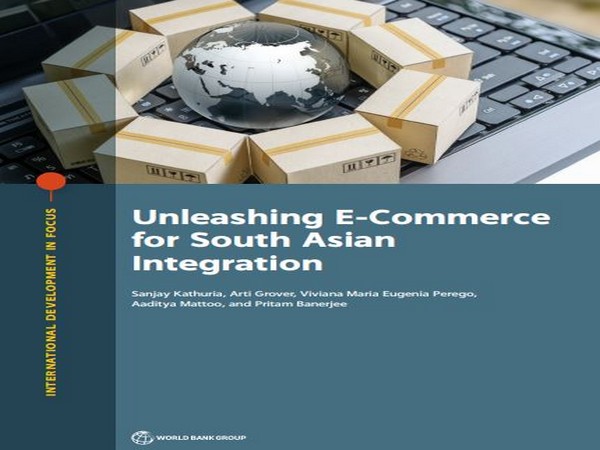E-commerce potential remains largely untapped in south Asia: World Bank
E-commerce can become a driver of growth across south Asia and boost trade between the region's countries but its potential remains largely untapped, according to a new World Bank report released on Monday.

- Country:
- India
E-commerce can become a driver of growth across south Asia and boost trade between the region's countries but its potential remains largely untapped, according to a new World Bank report released on Monday. The report titled 'Unleashing E-Commerce for South Asian Integration' says although e-commerce has grown significantly in south Asia, online sales accounted for a mere 1.6 and 0.7 per cent of total retail sales in India and Bangladesh as compared to 15 per cent in China and about 14 per cent globally.
Increasing the use of e-commerce by consumers and firms in south Asia can potentially help increase competition and firm productivity, and encourage diversification of production and exports, the report adds. "E-commerce can boost a range of economic indicators across south Asia -- from entrepreneurship and job growth to higher GDP rates and overall productivity," said Sanjay Kathuria, World Bank Lead Economist and co-author of the report.
"By unleashing its online trade potential, south Asia can better integrate into international value chains, increase its market access and strengthen commercial linkages between countries across the region." A survey of over 2,200 firms in south Asia showed that the top concerns on cross-border e-commerce sales included e-commerce related logistics, e-commerce and digital regulations, and connectivity and information technology infrastructure. These barriers are significantly higher when trading with other south Asian countries.
The main international e-partners of firms in south Asia are China, Britain and the United States, and not other south Asian countries. Small and medium enterprises in the region reported that removing regulatory and logistical challenges to e-commerce will increase their exports, employment and productivity by as much as 20 to 30 per cent.
To overcome these hurdles, the report proposes reforms in areas such as payments, delivery, market access regulations, consumer protection and data privacy at the national, regional and global levels. "Some practical steps to strengthen online transactions include leveraging the reputation of large e-commerce platforms to offer consumer protection, return and redress, and data security as an initial substitute for robust contractual and consumer protection mechanisms, and permitting cross-border e-commerce payments," said Arti Grover, World Bank Senior Economist and co-author of the report.
The report also suggests an incremental approach to taking these steps if necessary in order to build confidence. "While cross-border trade within South Asia represents only five per cent of the region's total trade, e-commerce has the potential to stimulate regional trade by bridging the gap between buyers and sellers on different sides of national borders," said Viviana Perego, World Bank Agriculture Economist and co-author of the report.
"And apart from firms, consumers in South Asia stand to gain significantly from the potential reduction in costs and availability of a greater variety of e-traded goods and services." (ANI)
(This story has not been edited by Devdiscourse staff and is auto-generated from a syndicated feed.)
- READ MORE ON:
- South Asia
- World Bank
- China
- India
- Bangladesh
- Sanjay Kathuria
- Britain
- United States
ALSO READ
Senior US treasury officials to urge India to maintain implementation of Russian oil price cap
Treasury secretary heads to China to talk trade, anti-money laundering and Chinese 'overproduction'
Indian Navy hands over nine pirates to Mumbai Police
Pakistan Volleyball Federation invites India for tournament in Islamabad
Senior US treasury officials to urge India to maintain implementation of Russian oil price cap










